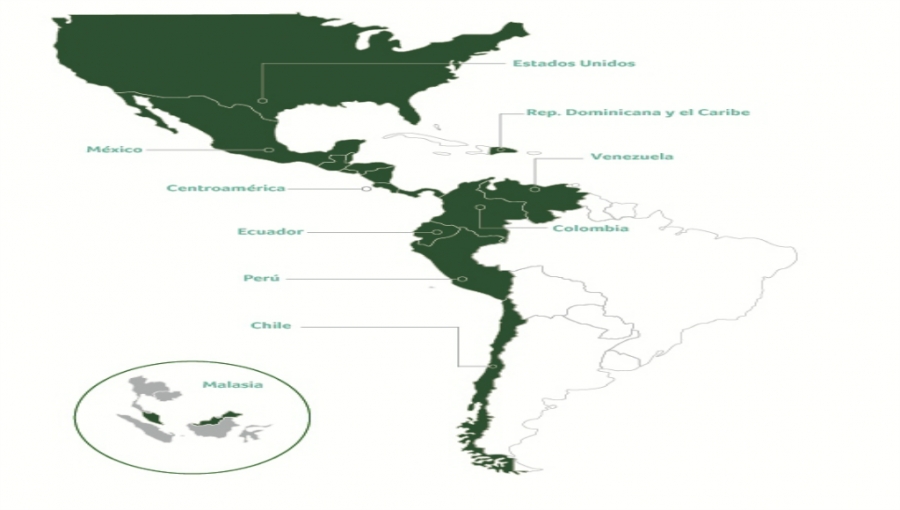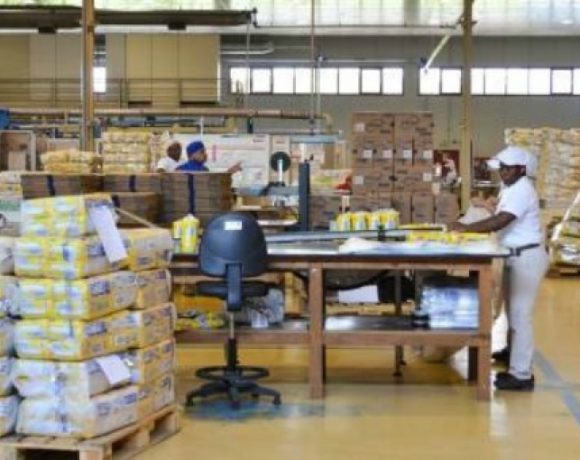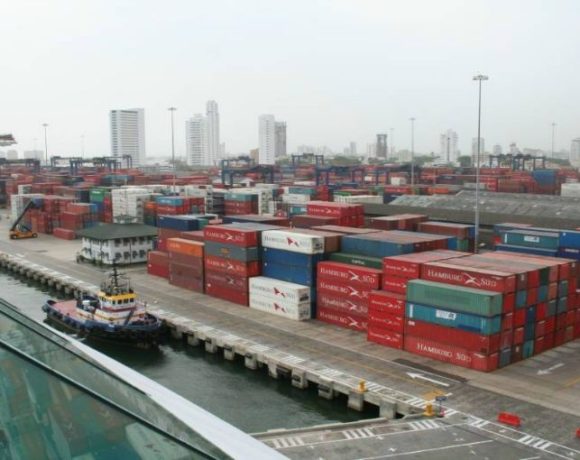Andi: ‘Global Value Chain’ Opportunities – Part Three

The “global value chain” opportunities arising for Colombian exporters — identified in a new study by Medellin-based Andi (the Colombia national industrial trade association) — are already being exploited by certain pioneering companies.
According to the Andi study, these exporting companies have already learned that the old idea of sourcing raw materials and producing everything by themselves – targeting a single country or a single place — is a business model that’s fading.
Examples of just a few of the Colombian companies that so far have responded successfully to recent free-trade agreements (FTAs) are Grupo Nutresa, Aldor, Recamier, Carvajal, Colombina and Alpina, the Andi study shows.
Six Case Studies
Among the examples in the study:
Nutresa: Medellin-based Grupo Nutresa is a conglomerate of companies in the food-products sector with significant presence not only in the domestic Colombian market but also in the Andean Region, Central America, Caribbean nations and – most recently – new penetration into the North American market.
The company will celebrate its 100th year in business in 2016, having started initially as “Galletas y Confites,” which later became Galletas Noel. This was followed by the creation of Compañía Nacional de Chocolates, then later entry into markets including sliced meats, coffee, ice cream specialties, pastas and other types of packaged foods.
Today the company has 40 industrial plants and had sales that topped COP$6.46 billion (US$2.1 billion) in 2014. Of its more than 44,000 employees, 12,500 work in 14 countries outside Colombia.
Its products are now sold in 72 countries on five continents. At year-end 2014, exports from Nutresa plants in Colombia alone were valued at US$214 million, according to the company.
This expansion is the result of “continuous learning” as well as adaptation of its products and plants to the global value chain. This has required adjustments to respond to certain consumer tastes, as well as adjustments forced by regulations in certain countries, according to the study.
The greatest challenge to Nutresa today is “how to overcome barriers that many countries are adopting in the food sector,” according to the study.
Barriers include new requirements to buy certain raw materials in host countries, as well as new labeling rules that (for example) require detailing of calorie content, fat content and sugar content. Some labeling demands – such as those recently imposed by protectionist-oriented Ecuador — “aren’t necessarily supported by scientific studies,” the study adds.
Such demands raise costs and undercut scale economies, although they don’t necessarily bar export market access, the study shows.
Nutresa’s recent purchase of Texas-based cookie manufacturer Fehr Foods opened new doors to a huge North American market, the study adds. Not only are the products popular with U.S. consumers, but per-worker plant productivity at the former Fehr facilities is twice that of Colombian plant productivity, the study shows.
Local availability of raw materials for the Fehr plants is abundant and price-competitive, while the use of advanced plant technologies enables a 20% cost reduction compared to competing plants, according to the study.
Nutresa’s Fehr operation in Texas also enjoys a relatively friendly business environment, including less regulatory paperwork and a relatively lower tax regime compared to Colombia, according to the study.
Aldor: Cali-based sweet-foods producer Aldor — founded in 1991 by the Aljure-Dorronsoro family – has focused on international markets since its beginnings, the study shows.
Just two years after its founding, the company was already exporting to Panama, Ecuador and Haiti, and participated in trade fairs that opened new markets in the Dominican Republic, Costa Rica and the United States.
Today, the company now exports 72% of its production to nearly 60 countries. It has grown to 1,450 employees and now operates two plants: One in Colombia and one in South Africa.
In the mid-1990s, the company made significant investments in production technologies and continued to expand its line of products. These now include yogurt-flavored popsicles, sugar-free chewing gum, coffee-flavored caramel candies, fruit chews and other confections.
A decade later, the company began producing candies on behalf of multinationals including Cadbury-Adams, Nestle and Ambrosoli, the study shows.
Its next big leap in internationalization was entry into the South African market, where it now produces 18,000 tons per year of confections at a 14,000-square-meters plant (half the size of its Yumbo, Colombia plant). This plant employs 200 and is administered continuously from its Colombia headquarters, according to the study.
The move to South Africa was partly explained by a fiscal incentive scheme that covered 100% of the cost of the plant’s machinery, and water-and-gas utilities that are much cheaper than those in Colombia, according to the study.
The company’s “Yogueta Mango Tango” and “Pin-Pop” brands are now leaders in the South African confections market, according to the study.
Recamier: This beauty-products company, launched in 1947, focuses upon higher-end clients — but at a price that enables it to compete with the multinational cosmetics giants, according to the study.
While the company lacks the financial muscle of its multinational competitors – especially for costly advertising campaigns – it discovered that it can enter new markets by working with existing distributors of similar or complementary products, according to the study. In this way, Recamier has achieved the “critical mass” necessary to sustain itself, according to the study.
The Colombia peso (COP) “revaluation period” of 2002 to 2014 – when the U.S. dollar fell and the peso rose – proved to be a big challenge to the company.
However, Recamier responded to the challenge by upgrading its industrial plant, boosting productivity, cutting costs and improving its marketing, which actually led to an increase in exports (despite the COP exchange-rate problem), according to the study.
The company now produces 3 million product units each month –36% of which go for export. Following 10 years of market efforts in the U.S., Recamier now has products in 4,000 beauty shops in four U.S. states. Other markets include Ecuador, Peru, Panama, Bolivia, all of Central America, along with lesser markets in Australia, Hong Kong and the Middle East, according to the study.
Carvajal: This 111-year-old company started in the printing business and eventually expanded into construction, office products, home products and even automotive retailing.
The company also has carved-out niches in graphic arts production, plastics, directory publishing, packaging and office furniture.
Since the 1970s, Carvajal expanded its operations to Panama, Costa Rica, Nicaragua, Guatemala, Ecuador, Mexico, Chile, Argentina, Brazil and Caribbean nations. It now has operations in 17 countries and exports to more than 50 destinations, according to the Andi study.
On some occasions, Carvajal’s early entries into foreign markets started in association with local partners. But the company eventually would buy-out 100% of those local owners, according to the study.
Today, Carvajal’s consolidated sales are around COP$2.9 billion (US$947 million), focused mainly upon packaging, papers, school supplies, technology and information services, office furnishings, printing services and electronic document-exchange services.
Colombina: This 80-year-old producer of sweets, cookies, crackers, jams, juices and sauces now exports products to more than 70 countries and employs some 9,500, according to the study.
The company now boasts that it’s one of the 15 biggest generators of formal employment in Colombia. Its 2014 sales hit an all-time record of US$240 million.
Colombina’s first international sales – to the U.S., starting in 1965 – marked the entry of the first South American company to compete with European confectioners in the huge U.S. candy market, according to the study.
This initially started as production on behalf of existing U.S. brands. But today, 70% of Colombina’s U.S. sales in the U.S. market are sold under Colombian brand names, through giant U.S. retail chains including Walmart, Target, Walgreens, Kroger, Publix and Dollar Tree, according to the study.
Penetrating these foreign markets required significant investments in meeting international quality and safety standards, including ISO and kosher requirements, the study noted.
Thanks in part to its launch of production at a new plant in Guatemala (in association with Grupo Pantaleon Concepcion), Colombina also now has a 30% share of the Central American sweets market.
Alpina: This dairy-products giant – launched in the tiny town of Sopo (near Bogota), initially under the name of “Fábrica de Quesos Suizos Göggel y Banzing” – later evolved from a small, family-owned operation to a multinational public corporation.
Along the way, Alpina added yogurt production and then cheese production including emmental, gruyere and parmesan varieties. Arequipe and milk products came later.
Following a series of acquisitions, the company grew from 20,000 commercial customers to 120,000 in the mid-1980s.
By 2002, sales rose to US$550 million, as it launched new types of yogurt including Yox, Regeneris and Frutto. An Ecuadorian acquisition pushed the number of commercial customers to 180,000.
By 2008, sales hit US$676 million — and the company launched a new business-development center in the U.S.
Three years later, in 2011, Alpina built its first dairy-products production plant in the U.S., in New York state.
The company now boasts of an advanced research and development (R&D) center that not only helps develop new products, but also works on environmentally sustainable methods of production and packaging.
Alpina annually invests about US$5.2 million in R&D, including biotech processes, biogas recycling, package recycling, and new schemes to cut carbon emissions throughout the production chain, according to the study.
Each month, Alpina now recycles about 110 tons of its industrial residuals. This not only cuts Alpina’s carbon footprint, but it also reduces the company’s logistics costs, according to the study.
Thanks to another research project, since April 2014 the company has figured out how to recycle 16.2 tons of polyethylene, which cuts both energy costs and carbon emissions, according to the study.
Next: Regulatory, Tax and Cost Issues/ Part Four
















